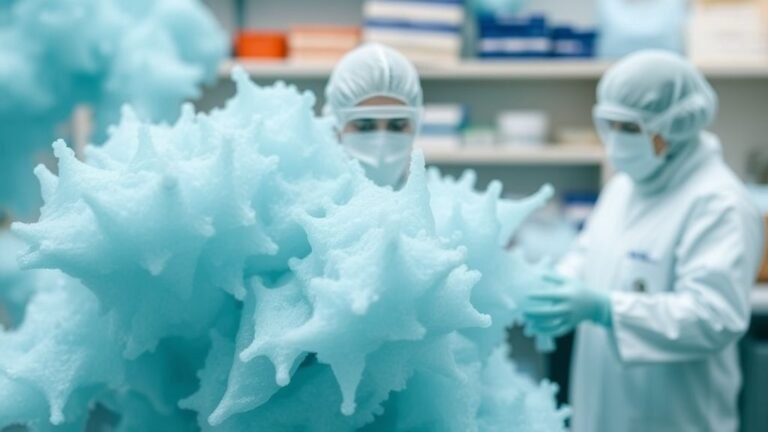
Do Gentle Laundry Detergents Really Clean? The Truth Behind “Sensitive Skin” Labels
For parents of young children or anyone with sensitive skin, doing laundry isn’t just about freshness — it’s about safety. You want a detergent that removes tough stains like grass, food, and sweat, but without harsh chemicals that could irritate delicate skin or trigger allergies.
The good news? More options than ever claim to offer that balance. From big-name brands to eco-conscious startups, “gentle” detergents are now a common sight on store shelves. But do they actually clean well? Or are you sacrificing performance for peace of mind?
To find out, we looked at how these products are marketed, what they leave out, and — most importantly — how they perform in real-world conditions.
What Does “Gentle” or “Free & Clear” Really Mean?
Walk down the detergent aisle, and you’ll see labels like “hypoallergenic,” “fragrance-free,” “dye-free,” “pediatrician recommended,” or “safe for sensitive skin.” But these terms aren’t regulated the same way across brands, so their meaning can vary.
In general, detergents labeled as “free & gentle” avoid common irritants such as:
- Synthetic fragrances (which often contain phthalates, known endocrine disruptors)
- Artificial dyes
- Optical brighteners
- Phosphates
- 1,4-dioxane (a potential carcinogen that can form during manufacturing)
“Even if a chemical isn’t harmful on its own, the way it’s made can introduce contaminants,” explains Dr. Eric Boring, a chemist specializing in consumer product safety. “That’s why it’s smart to choose detergents tested for purity — especially if you’re washing baby clothes or items for someone with allergies.”
Experts recommend looking for products labeled fragrance-free (not just “unscented”) and avoiding those that list only “fragrance” without disclosing the specific ingredients. That vague term can hide dozens of undisclosed chemicals.
Can a Mild Detergent Still Clean Well?
This is the big question: If you remove the strong stuff, does the detergent still work?
The answer isn’t simple. In independent testing, many gentle detergents perform well to decently, but there’s a wide gap between brands.
Top performers — including certain versions of Tide Free & Gentle, Persil ProClean Sensitive Skin, and All Free Clear — handle everyday stains like coffee, dirt, and body oils effectively, even in cold water. These formulas manage to clean without relying on dyes or strong perfumes.
But not all do. Some “gentle” detergents — particularly Dreft, Seventh Generation Free & Clear, and Target’s Up & Up Free+Clear — fell short in stain removal, earning only fair or poor ratings in rigorous wash tests.
And when it comes to laundry sheets and powders marketed as eco-friendly or gentle, performance tends to be weaker. Many struggle to dissolve fully or lack the cleaning power needed for oily or set-in stains. Experts generally advise sticking with liquid detergents for better results.
“Some people are willing to accept slightly less cleaning power if it means fewer skin reactions,” says Rich Handel, a laundry product specialist. “But for heavily soiled clothes or active kids, you might need something stronger — or a pre-treat step.”
Don’t Just Trust the Label
A smiling baby on the bottle or a “dermatologist-tested” badge doesn’t guarantee safety for every skin type. Even products labeled “free and clear” can contain ingredients that trigger allergies in sensitive individuals.
That’s why it helps to go beyond marketing claims:
- Look for the EPA Safer Choice label — it means the product meets strict safety and performance standards.
- Check SmartLabel (a digital ingredient disclosure tool) to see exactly what’s in the formula.
- Refer to independent watchdogs like the Environmental Working Group (EWG), which rates detergents for ingredient transparency and health impact. Brands like Attitude, Better Life, and Common Good often score well here.
And remember: “Fragrance-free” is not the same as “unscented.” Unscented products may still contain masking fragrances to cover chemical odors — which can still irritate.
How Are Gentle Detergents Tested?
To measure real cleaning power, experts don’t just rely on labels — they put detergents to the test.
In controlled lab conditions, fabric swatches are stained with tough, everyday messes:
- Blood
- Grass
- Coffee
- Chocolate
- Salad dressing
- Body oils and dirt
These are washed using standard settings, then compared to swatches cleaned with water only. A device called a colorimeter measures how much stain remains, giving an objective score.
Tests also check how well a detergent works:
- In hard water (common in many homes)
- As a pre-treatment for set-in stains
- At cold water settings (since many eco-conscious users avoid hot water)
The results? Some gentle detergents perform nearly as well as their conventional counterparts. Others fall behind — proving that “gentle” doesn’t always mean “effective.”
So, What’s the Verdict?
Yes, some gentle detergents clean very well — but not all. The key is choosing wisely.
✅ Best picks: Look for liquid formulas from trusted brands that are free of dyes, fragrances, and known irritants, and that have strong performance reviews.
❌ Avoid: Laundry sheets and underperforming powders, especially if you deal with tough stains.
🔍 Check ingredients: Don’t assume “safe” means safe for your family. When in doubt, patch-test or consult a dermatologist.
For most families, a high-performing, fragrance-free liquid detergent strikes the right balance: gentle on skin, tough on stains.
And if you’re dealing with severe sensitivities, consider rinsing clothes twice to remove any detergent residue — an extra step that can make a real difference.
Final Thought: Gentle Doesn’t Have to Mean Weak
You don’t have to choose between safety and clean clothes. With more transparency and better formulations than ever, many gentle detergents now deliver real cleaning power — without the irritants.
The trick is looking past the marketing, checking the ingredients, and choosing a product that’s proven to work — not just one that looks good on the shelf.





